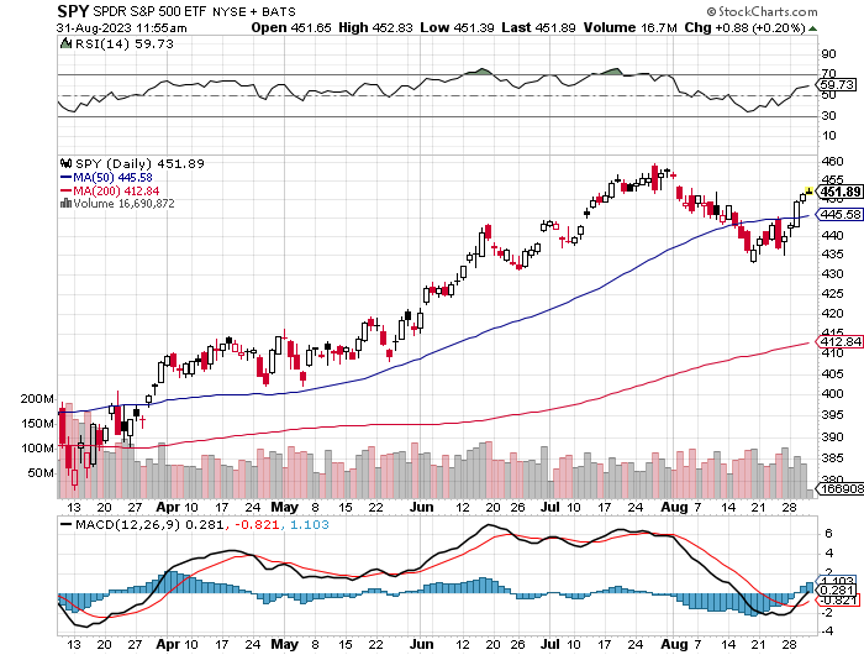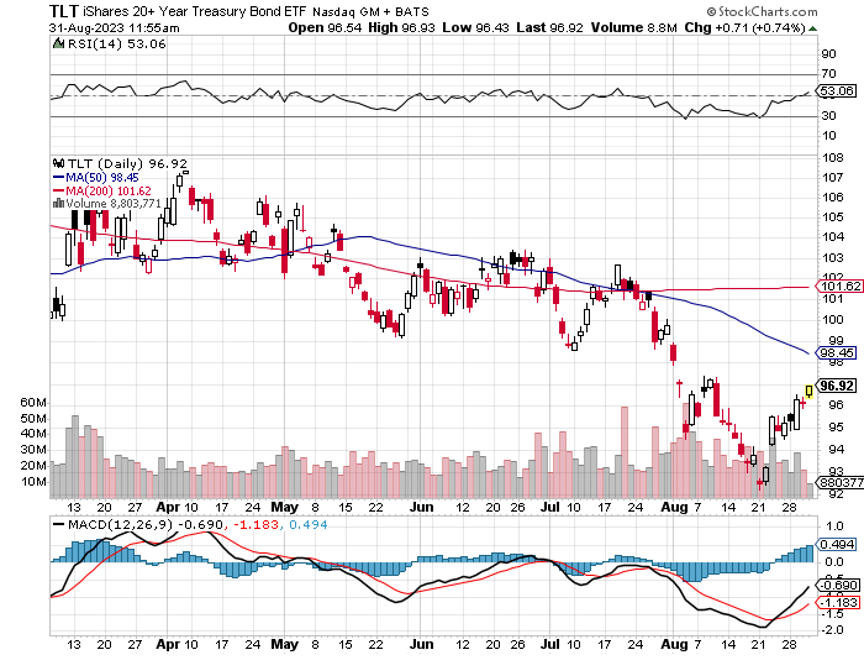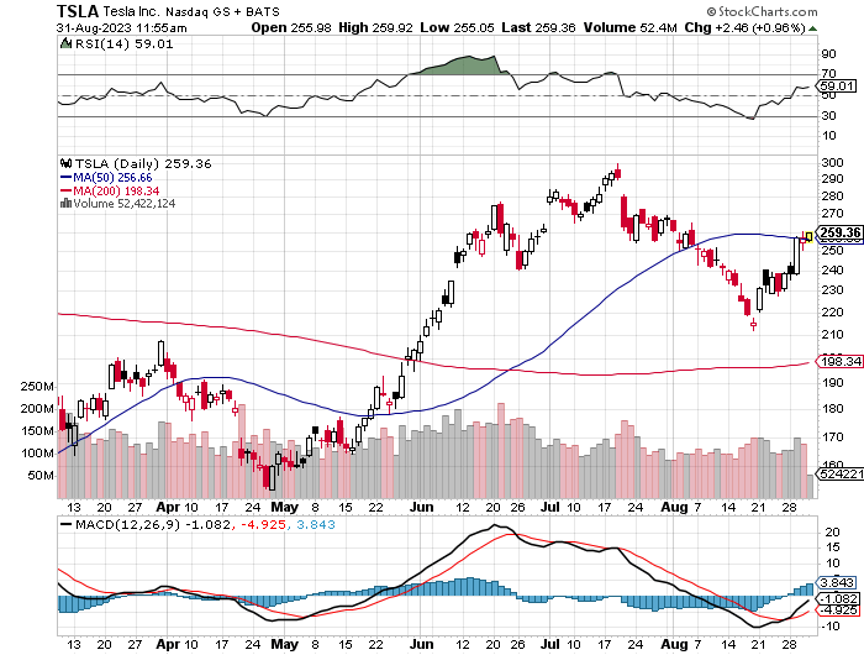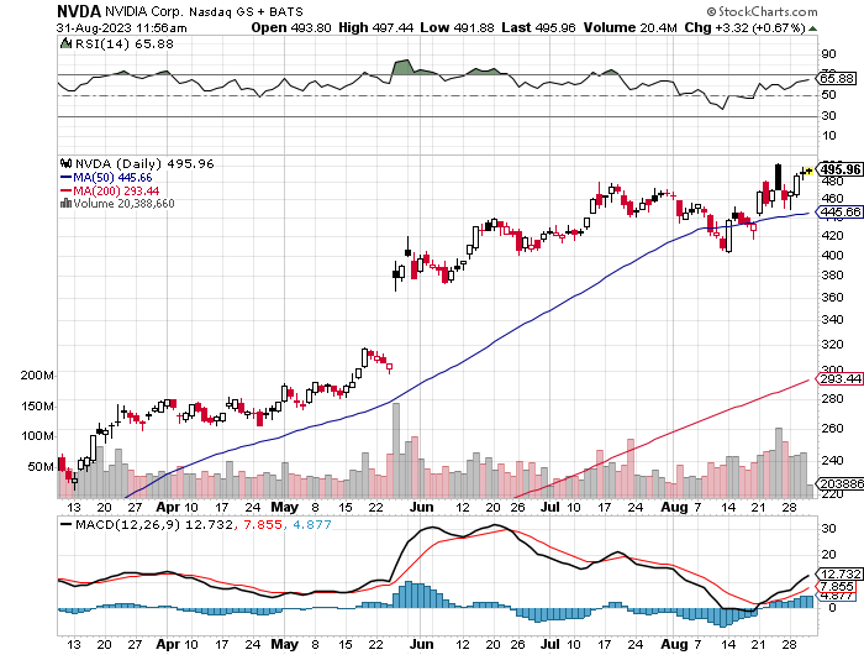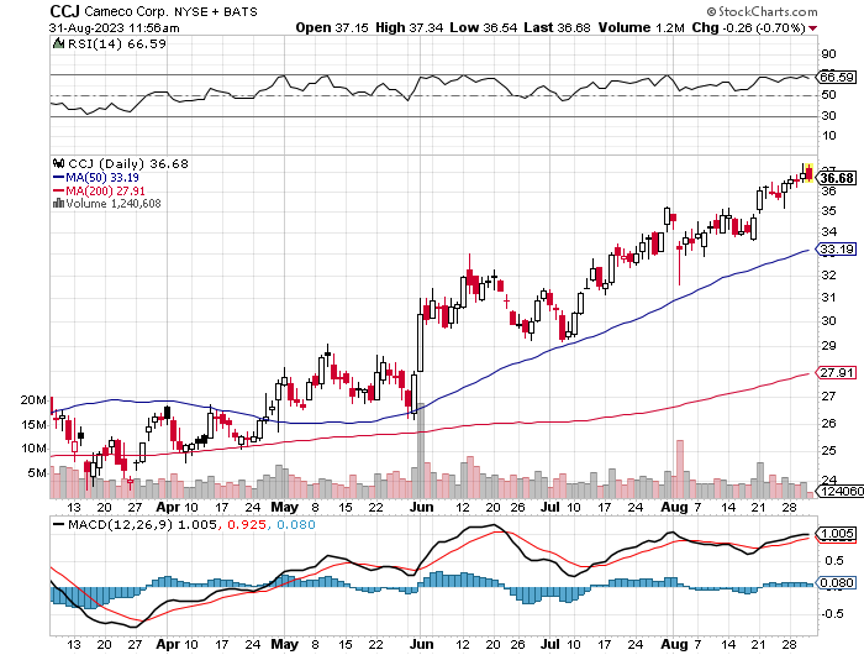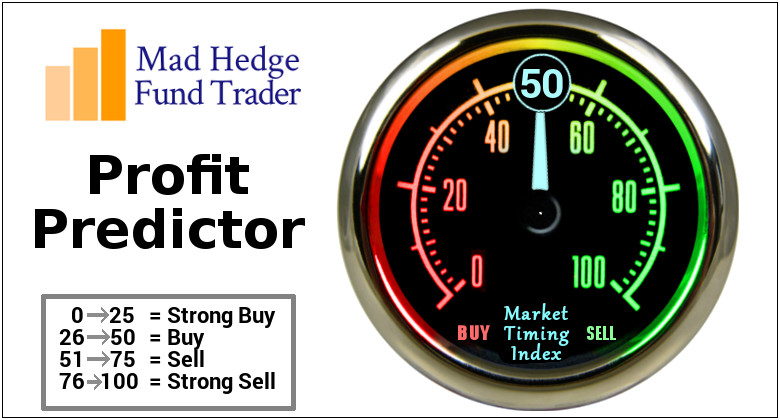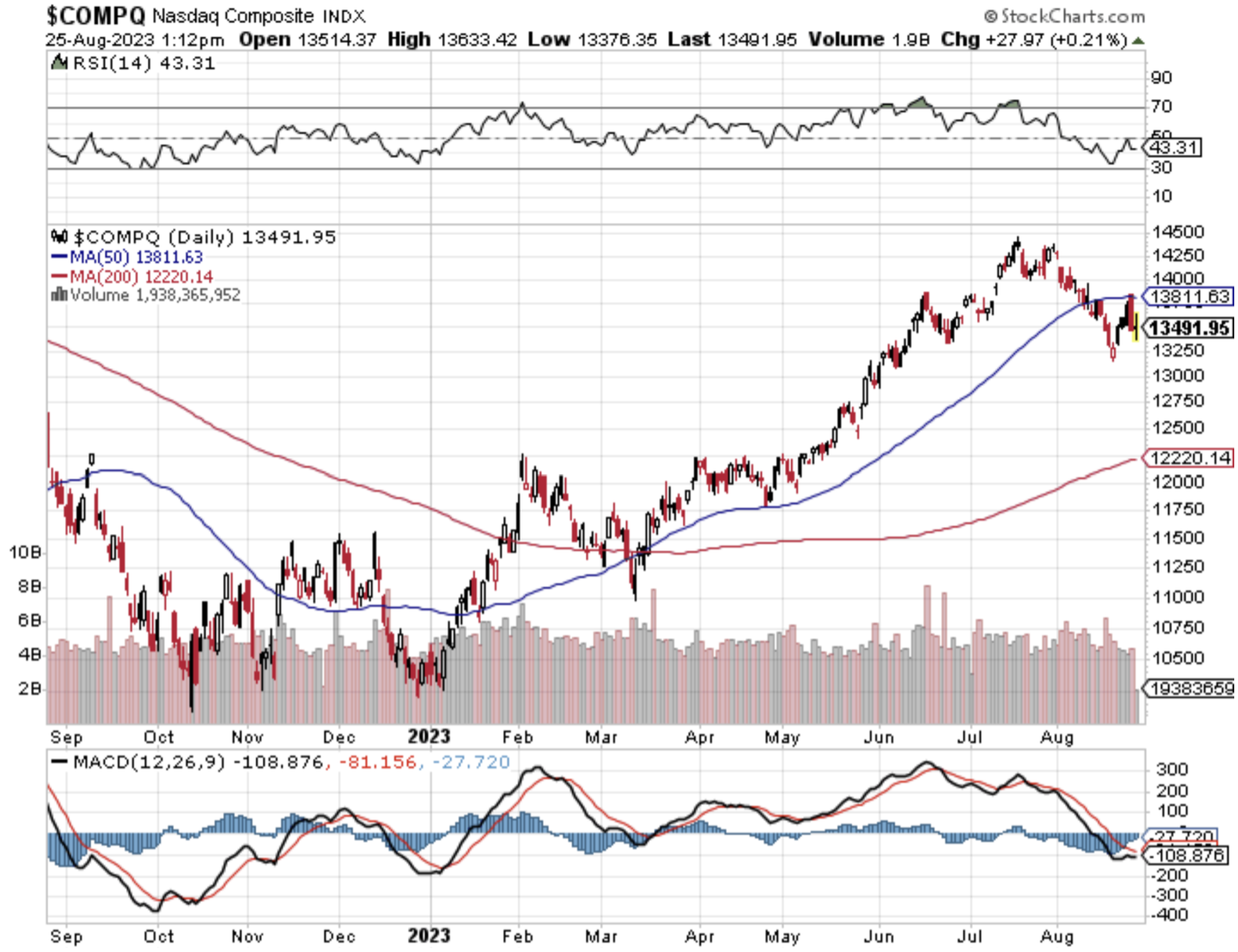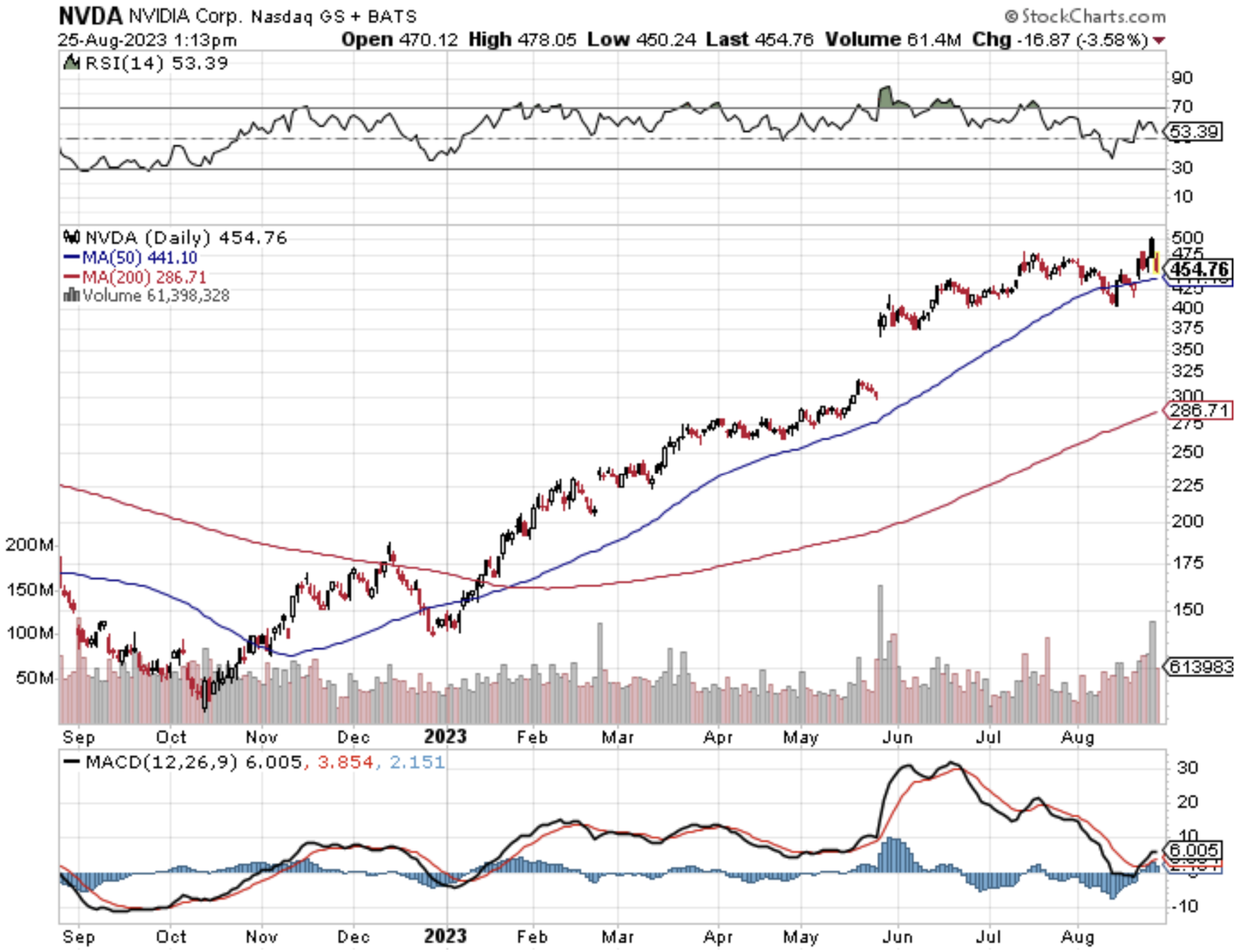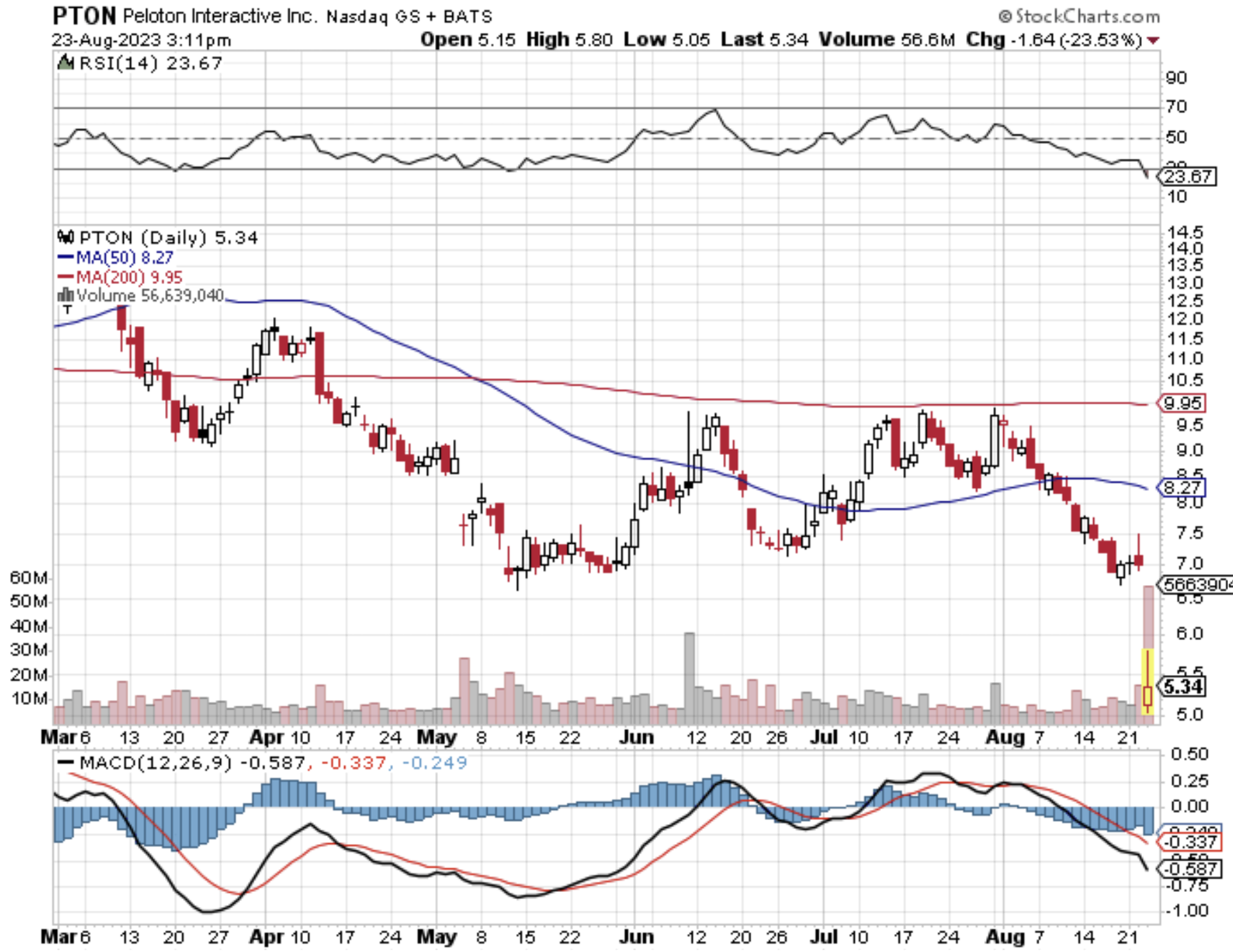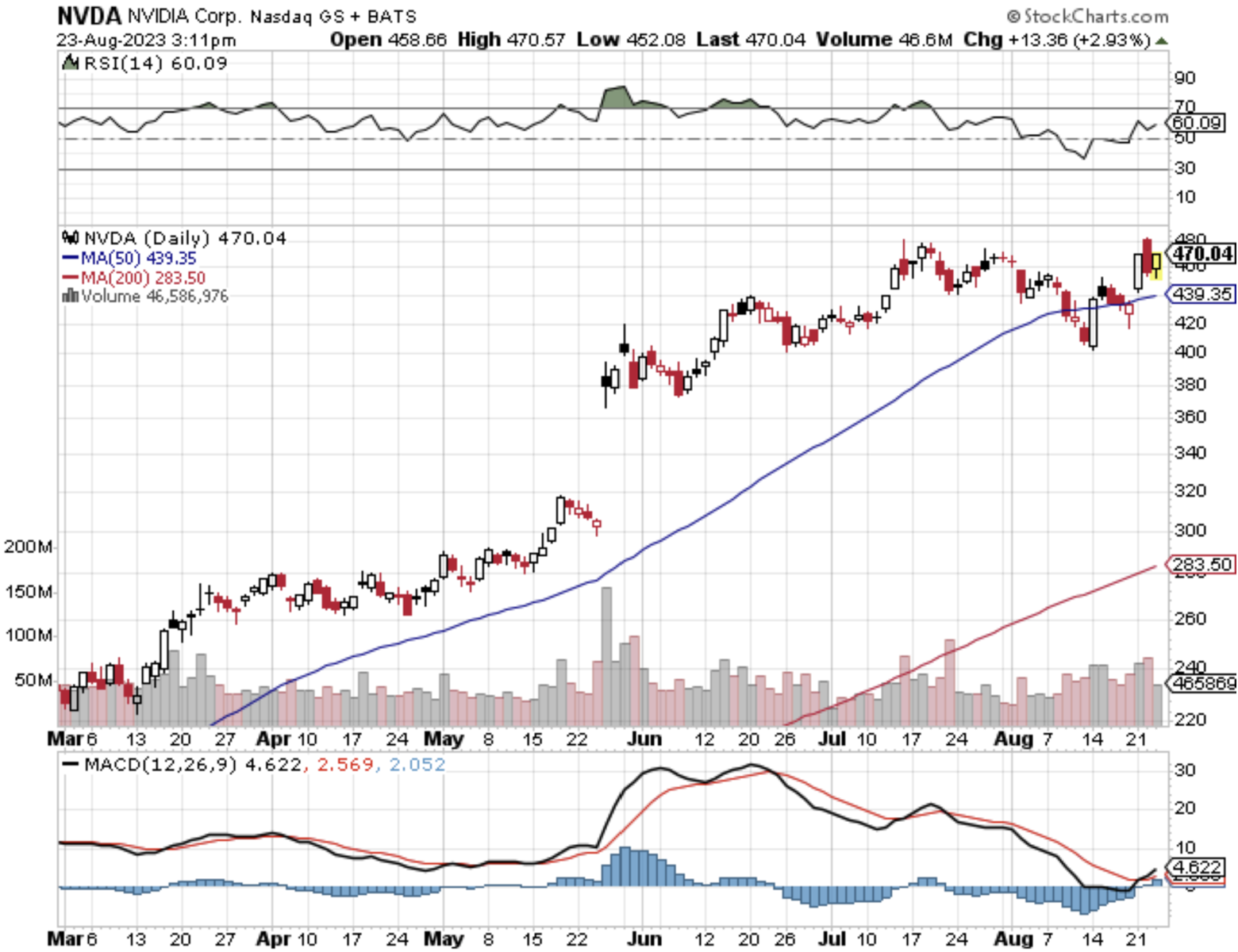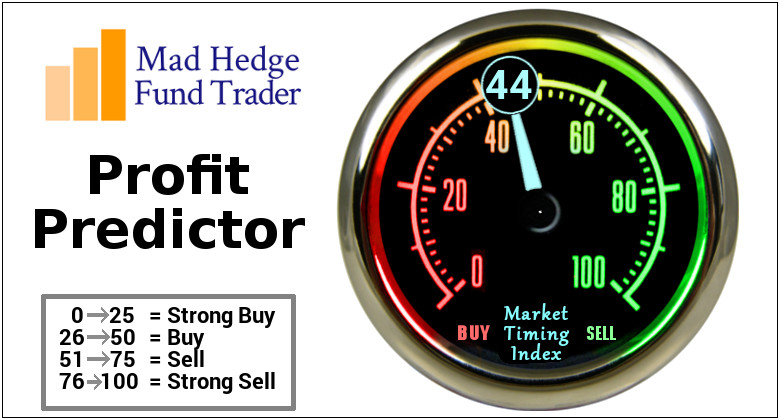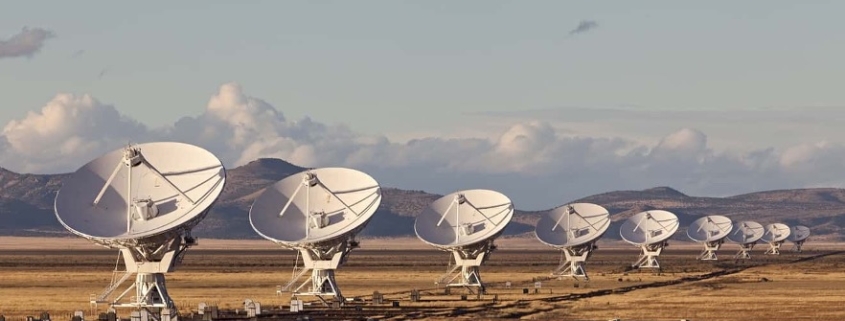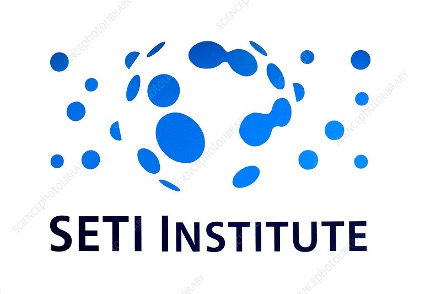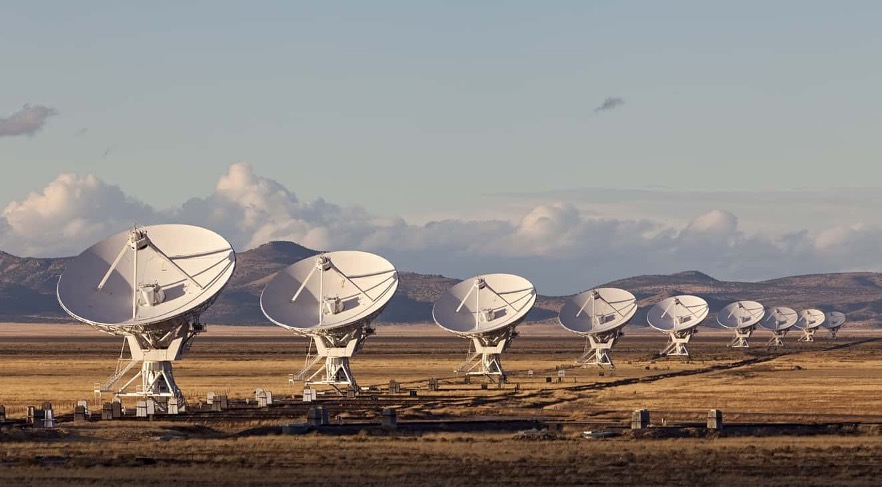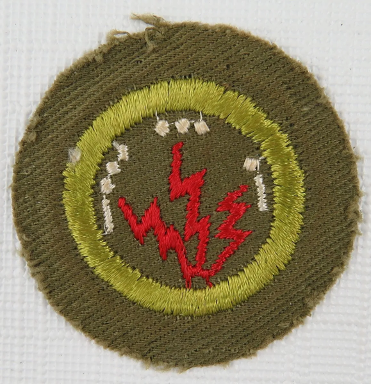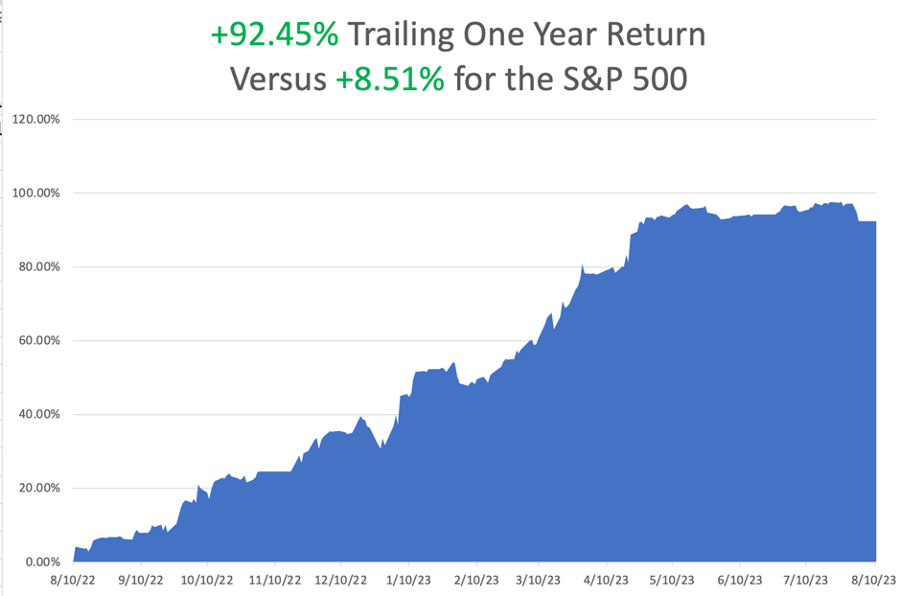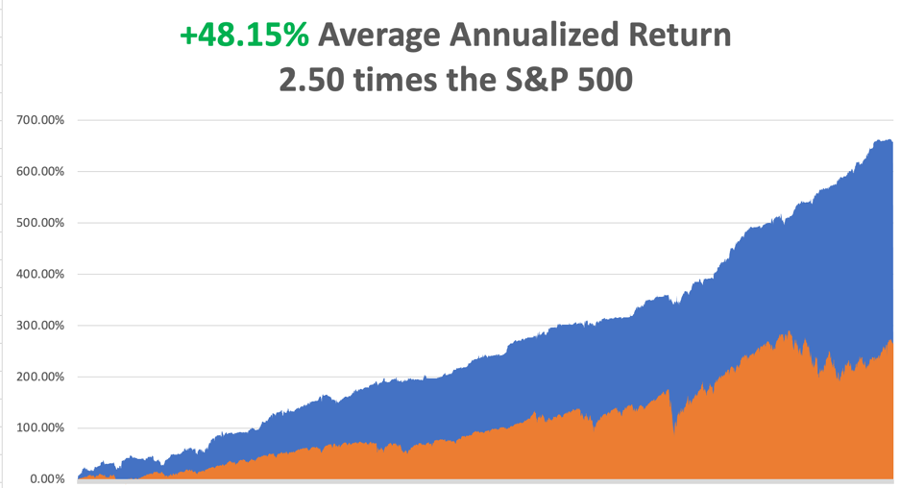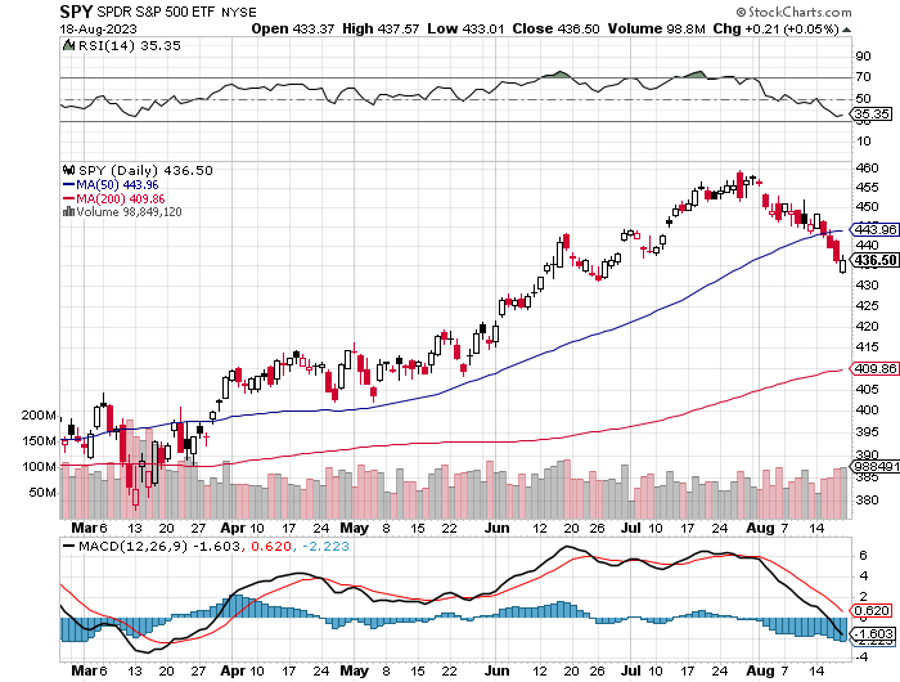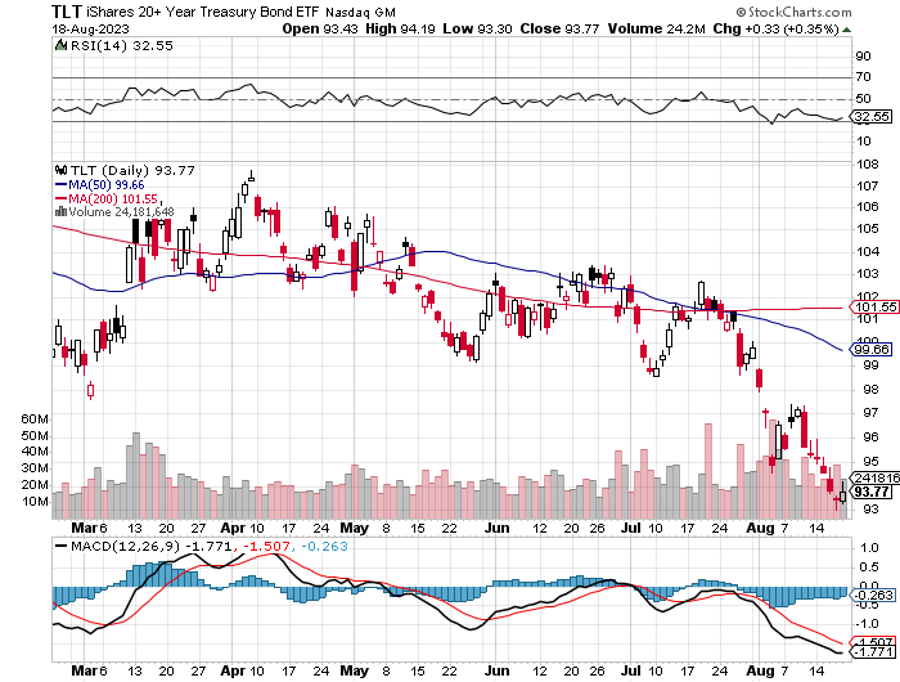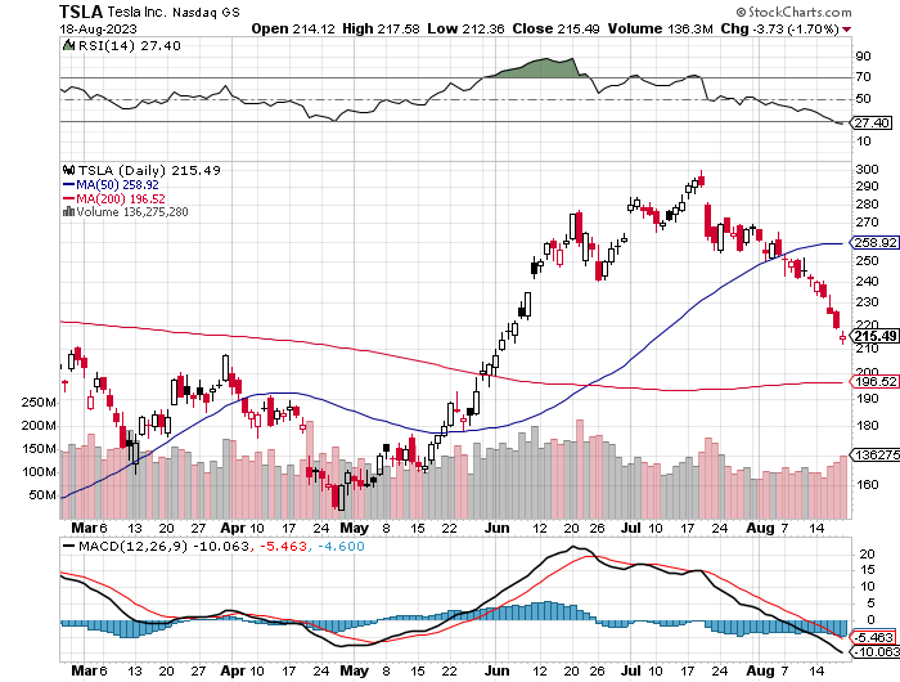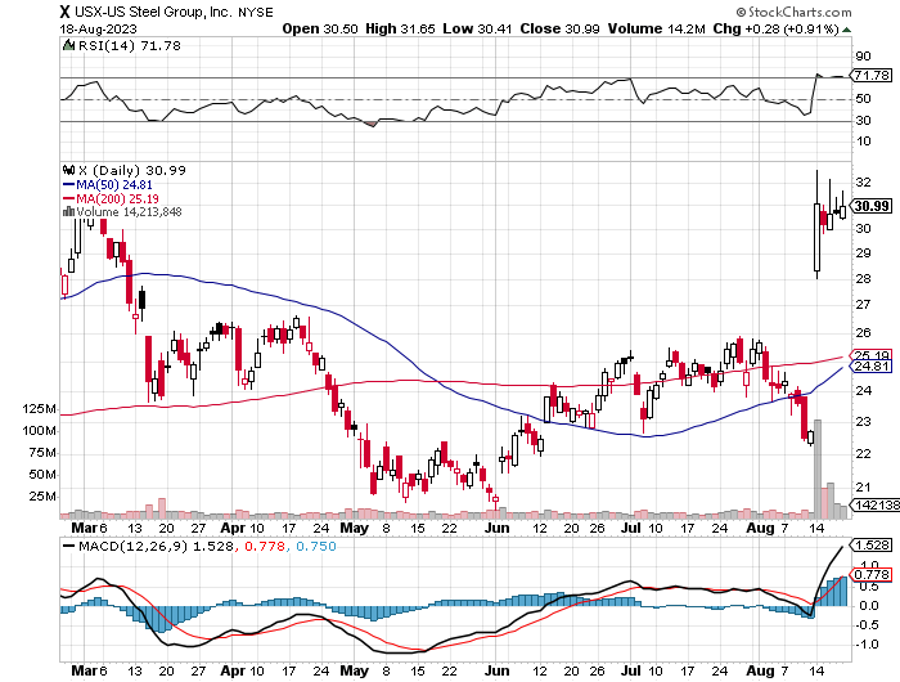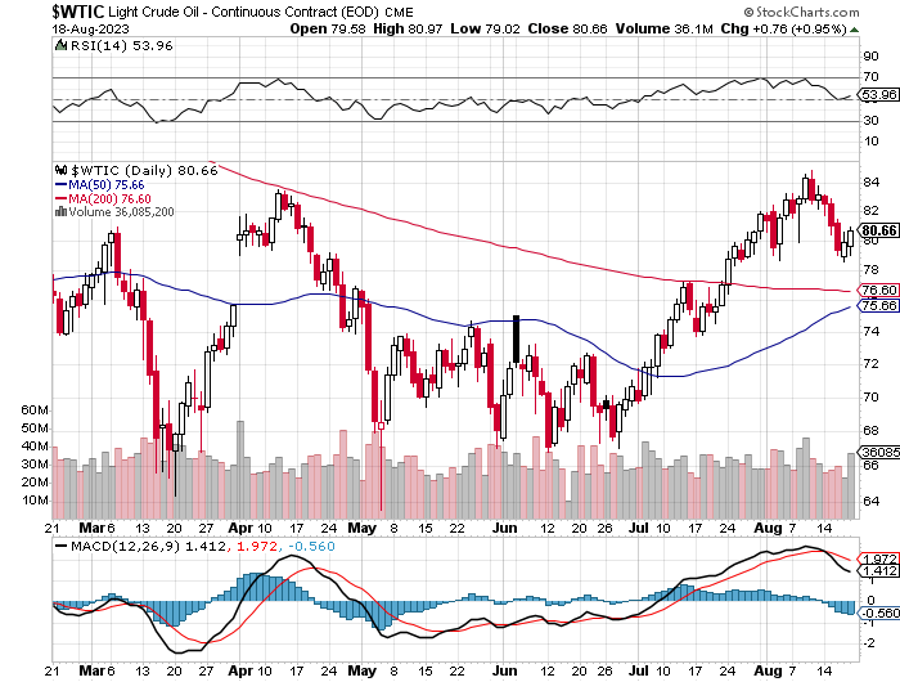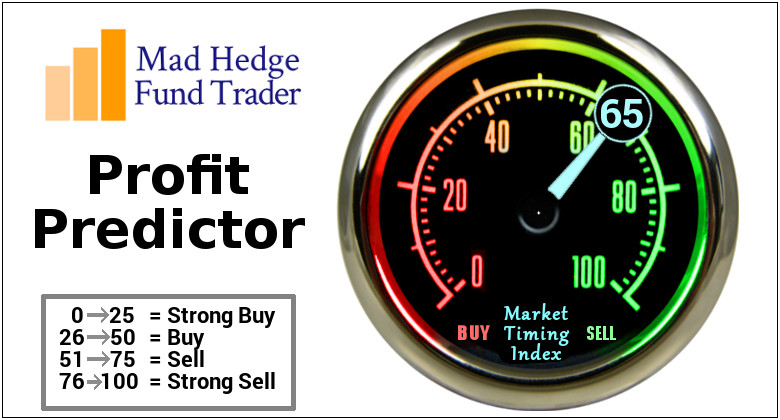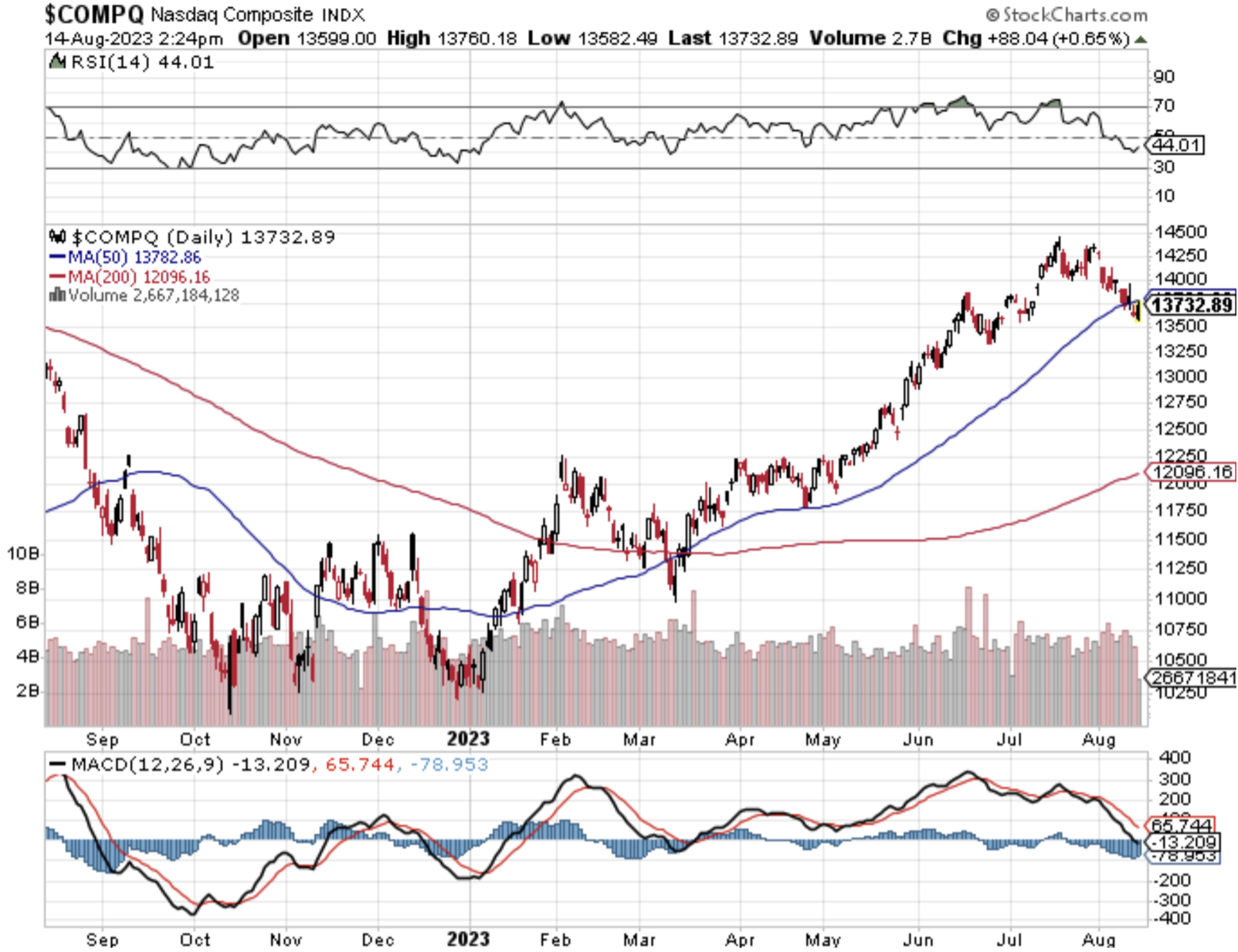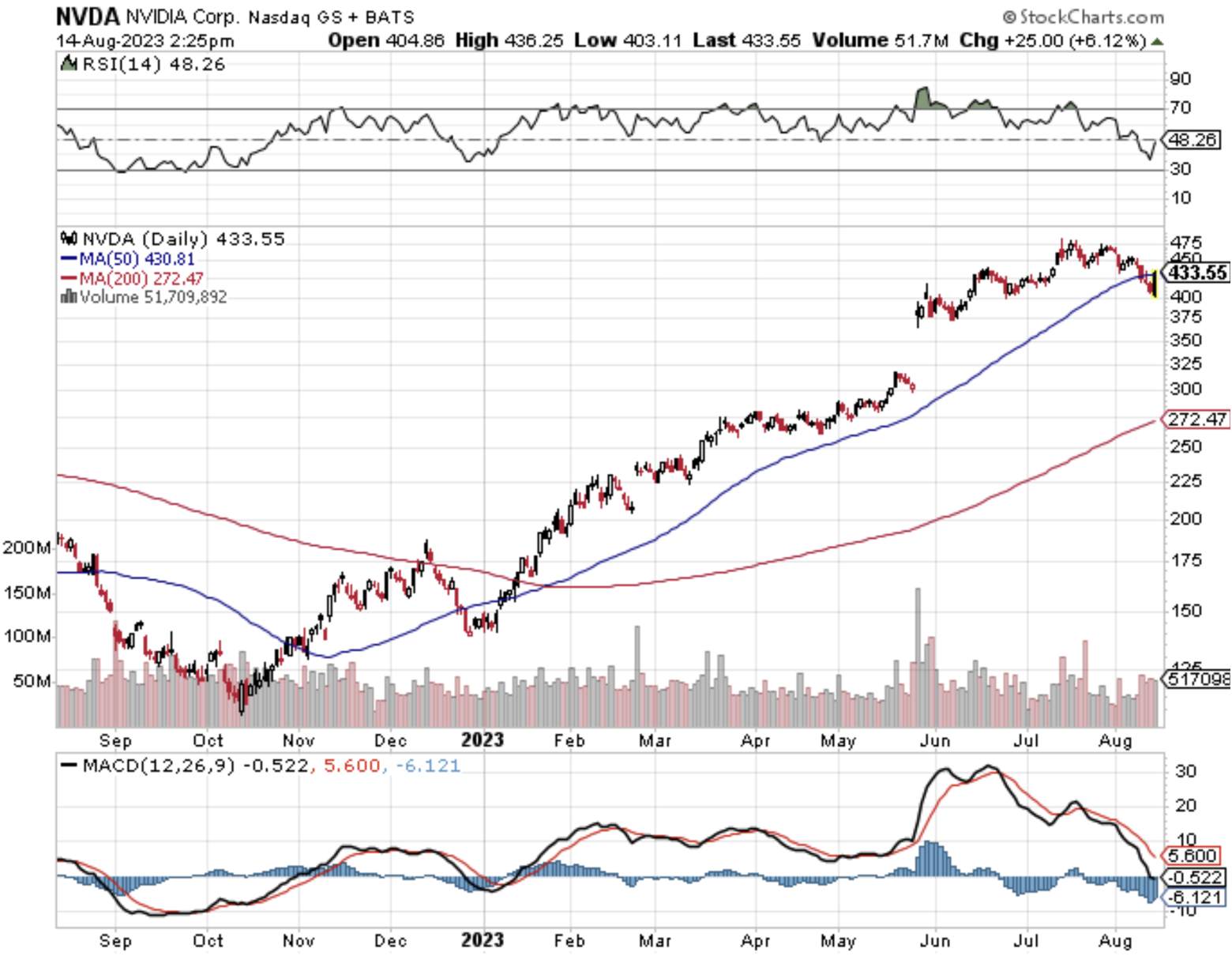Below please find subscribers’ Q&A for the August 30 Mad Hedge Fund Trader Global Strategy Webinar, broadcast from Silicon Valley, CA.
Q: I have a question about NVDA. While NVIDIA is a top-of-the-line chip company, there are many companies, i.e., Amazon (AMZN), Microsoft (MSFT), and of course, China (FXI), that are looking to get into the arena and build their own chips-cutting into (NVDA) space. How soon do you think this will happen and how good will those chips be?
A: NVIDIA is ahead now because of decisions on software and platforms they made 20 years ago. As all the important employees are also shareholders with minimal cost there is no way you’re going to pry them away to another company. You can’t copy NVIDIA with a simple cut-and-paste operation as you can with most other companies and the market has figured this out. (NVDA) has a moat that will remain unassailable for years. Now they have the AI turbocharger. My short-term target is $1,000 and it probably goes much higher. I reiterate my strong “BUY” issued in 2015 at $15.
Q: Why do you think the demise of crypto is coming?
A: Not so much a demise as a long nuclear winter. The SEC has declared war on all the intermediaries, and if you don’t have intermediaries you can’t trade. That shrinks the market to hot wallets only, which only computer programmers can do. That is much smaller than the current market. The other reason is that crypto prospered when we had a cash surplus and an asset shortage. We had to invent new assets to soak up all that cash—that's what Bitcoin did, it soaked up about $2 trillion dollars. Now we have the opposite: a cash shortage thanks to high-interest rates and an asset oversupply—all of the busted stocks that emanated from crypto, all the SPACS, the ETFs, and so on, where people lost 90%-100% of their money. #3, there is still a massive fraud and theft problem with crypto running in the hundreds of billions of dollars. I’d rather just buy Apple (AAPL) or Google (GOOG) or Tesla (TSLA) with my money. Those are cheaper alternatives than existed 18 months ago.
Q: Will iShares 20+ Year Treasury Bond ETF (TLT) visit the $92.25 low or have yields peaked?
A: I hope it visits the $92 low—I’m going to be buying my pants off if we get that low, plus issuing two-year LEAPs with 100% returns. So absolutely, yes. (TLT) is bottoming here and starting to discount interest rate cuts which will begin in March or June.
Q: What do you think of sells on Tesla (TSLA)?
A: I ignore all sells on Tesla, as I have done for the last 13 years. Keep in mind that Tesla has always had one of the largest short interests in the market, and will continue to do so as many people don’t buy the hype, or the vision.
Q: Why haven’t we gotten any trade alerts on gold and silver?
A: We sent out trade alerts for the concierge customers on gold (GOLD) and silver (WPM), and if we see another good entry point we’ll send those out also to the regular Global Trading Dispatch customers.
Q: When you say dip, how much of a dip do you mean?
A: We’ve really only had a 7% dip in the S&P 500 (SPY) this summer top to bottom. Usually, you get 10%, but with $5.6 trillion in cash on the sideline and with AI and multiple other technologies accelerating, people are just not willing to wait. When you throw cold water on the market, as we have been doing all summer, you buy the heck out of it.
Q: Will China’s (FXI) real estate collapse cause a black swan for US markets? Will China go the way of Japan?
A: No, the Chinese real estate market is almost completely isolated from the rest of the global economy. Additionally, most of the Chinese debt is owned by a dozen or so government-controlled banks. So, real estate prices there can implode and have virtually no effect on anywhere else. I’m not worried about that at all. You might get a down day of a few hundred points when one of the biggest companies goes under, but no more than that, and it doesn’t affect China’s trading economy at all. On a list of things to worry about, that’s probably number 100.
Q: It’s said a lot of the recent gains in the market are from short covering—how do you determine the number of shorts out there?
A: Well, most short interest in stocks is in the public domain; all you have to do is Google the term “how many Tesla shorts,” and you’ll get a number—it’ll be like 20-25% of the outstanding shares. For some companies, like AMC Entertainment Holdings (AMC), the short interest can be 50% or more. So, it’s easy to find out; however, you want to buy the market before people start covering shorts, not after, because that buying power is then already in the market, and that would have been a couple of months ago. For any of the big hedge funds, almost none of them were shorting stocks. All of them were looking to buy on any declines; that’s what they’ve been doing all summer, and that's why the market was unable to appreciably fall.
Q: Outlook on Microsoft Corp (MSFT)?
A: Double in the next 3 years, as is the case with all of big tech.
Q; What about my iShares 20+ Year Treasury Bond ETF (TLT) 2024 LEAPS?
A: I think we will get enough of a rally in TLT by January for all of those Jan 2024 LEAPS to expire at max profit. They’re only $4 points away from max profit for the $95/$100s and $9 points away for the $100/$105s, and that is entirely doable if the Fed stops raising interest rates or even cuts them. At one point these LEAPS were up 70% from cost so that might have been a great time to take profits.
Q: Is your AI product different from the one offered by Tradesmith?
A: Yes, we have completely different trade alerts than Tradesmith has; and they are using different algorithms than we are, so, totally they’re different services. If you have the Tradesmith product, just keep watching it and see if it performs. Usually, it takes six months to decide whether a new service is worth renewing, so I would keep watching it. Also, Tradesmith has a ton of analytical tools which we don’t offer. They made a massive seven-year investment in their own AI tools, which are completely different than ours. They disclose some of theirs, but we don’t. Why give away the keys to the kingdom? We’ll just send you our trade alerts, which by the way have been 100% profitable.
Q: Whatever happened to meme stocks like AMC Entertainment Holdings (AMC)? Should I look at these?
A: Absolutely not—they’re pure gambling. You’re better off just buying a New York lottery ticket. No fundamentals; I’m amazed AMC is even still in business. I went to the movies a few weeks ago and I was the only person in the theater. I went to see the Oppenheimer movie, which I highly recommend by the way. I’m still radioactive from when I worked with his lot.
Q: Credit card debt has spiked to historic levels—will this eventually come back to haunt the US economy?
A: Not really, it really doesn’t translate to lower consumer spending or a weaker economy yet. My bet is these people get bailed out by falling interest rates again as they always are. Consumer Spending Rocketed in July, up a monster 0.8%, the second-best number of the year, in further evidence of improving economic growth. Never underestimate the ability of Americans to spend money
Q: Can we access recordings of these webinars?
A: Yes, we post them on the website in your members' section two hours after it’s recorded. Just log into madhedgefundtrader.com, go to your membership section, and it’ll list webinars as one of the services you have purchased and have access to.
Q: How will markets respond if Trump gets back in the White House?
A: Major market crash—that’s an easy one. The Trump who won in 2016 is not the same Trump as today.
Q: What will happen to the price of EVs when the world runs out of lithium?
A: The world will never run out of lithium, it’s one of the world's most abundant elements. The bottleneck is in lithium processing, and there are multiple lithium processing facilities using new technologies under construction around the country. That gets you around that bottleneck, and you also free yourself from Chinese sources of processed lithium. Elon Musk planned all this out 25 years ago when he first started Tesla. He planned for a 20 million unit/year scale-up and has locked up the lithium supplies to accommodate that level of construction, leaving the rest of the world in the dust.
Q: Would you comment on the potential of new EV car batteries to enhance travel distances?
A: Tesla has a new solid-state battery that increases battery ranges from 10 times to 20 times, but it hasn’t been able to economically produce them in large enough numbers to put them in new cars. That’s in the wings. If that happens, Tesla will be able to cut costs by $10,000 per car and shrink the battery size from 1,000 pounds to 50 pounds, which would be revolutionary and absolutely wipe out Detroit, China, and Japan. That would allow Tesla to take over the entire global car market. So, yes, when you consider all that, it makes my current forecast of $1,000 for Tesla look stupidly conservative.
Q: What’s your take on the state of the Russia/Ukraine war?
A: Ask me in three weeks, when I will be in Ukraine seeing the actual state of the war, visiting the front lines, delivering doctors and supplies to children’s hospitals, and doing assorted odd jobs that have been requested of me. You’ll get the full read on Ukraine then. For now, I can tell you that Ukraine is still winning, but 18 months in, the people are getting tired. The people in my team in Ukraine who are organizing this trip sometimes break down in tears from the sheer weight of the war on them. Of course, being bombed every day doesn’t help your sleep either. So be prepared for my report and video of the century on the Ukraine war.
Q: Stanley Druckenmiller has a big position in Cameco Corp (CCJ).
A: That’s absolutely true, and I’d be a LEAPS buyer there on any kind of pullback. Stanley is a billionaire for a reason.
Q: What happens to gold at the introduction of the US government's digital currency?
A: It probably goes up. Actually, it’ll probably have no impact, but if it’s going to do anything it’ll make gold go up because people who are frightened of digital currencies will buy gold as a safe haven. I happen to know a few of those who have millions of dollars worth of gold stashed away under their mattresses for this purpose.
To watch a replay of this webinar with all the charts, bells, whistles, and classic rock music, just log in to www.madhedgefundtrader.com, go to MY ACCOUNT, click on GLOBAL TRADING DISPATCH, then WEBINARS, and all the webinars from the last 12 years are there in all their glory.
Good Luck and Stay Healthy,
John Thomas
CEO & Publisher
The Diary of a Mad Hedge Fund Trader

2023 in the Naval & Military Club in London

